There are lots of good reasons to travel – there’s no mystery here. There is one reason to travel that you may not have considered. It’s cheese. Discovering new cheeses, learning how they’re made, and discovering the history of the places opens up whole new worlds of travel.
For me, a day without cheese is not a good day. So, as you can imagine, traveling for cheese is something that makes me very happy. Luckily for me, I work at Oldways, and cheese (traditional and raw milk/unpasteurized milk cheeses) and cheese travel are a part of my life. Over the last few decades, we’ve taken travelers to most Mediterranean countries, and cheese is almost always a treasured part of the journey. Here are a few you might consider when you are traveling.
Switzerland. Switzerland and cheese go hand in hand. In September we traveled to Switzerland and Gruyère to experience the La Désalpe—a traditional Swiss festival that celebrates the Alpine cows and the changing of the seasons. Led by Cathy Strange, one of the world’s great cheese experts, Le Gruyère AOP took us to nearby Charmey for this very special festival — after more than four months of grazing in alpine pastures, cows make their way down to the plain, wearing bells, flowers, and crowns. We were right in the thick of the parade of cows and goats wearing bells and flowers, marching with their farmers.
Afterwards, we experienced the Swiss tradition of the Bénichon lunch, a lengthy lunch featuring, of course, Gruyère. We also learned how to make fondue and visited a farm, a prize-winning Gruyère producer, and a cave where the Gruyère is aged. For more detail, read our blog and keep your eyes open for a repeat of this wonderful Oldways Culinaria traveling experience.
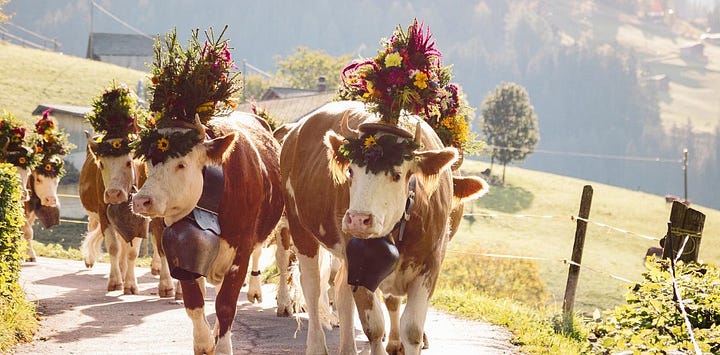
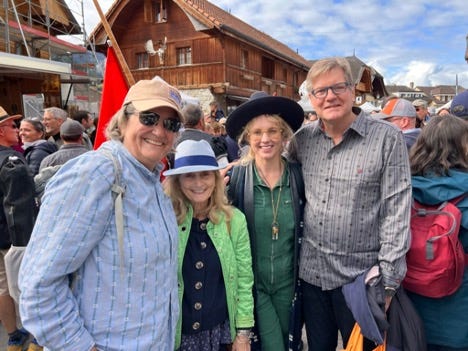
Spain. In the land of olive oil and wine, artisan Spanish cheeses have become well known. It wasn’t always that way. As described by Monika Linton of Brindisa, an importer of cheese and specialty foods in the UK, Spanish cheeses in the 1980s were not as well known in the UK as French and Italian cheeses.
Two Spanish pioneers – Enric Canut and Mariano Sanz – changed this. They made it their mission to revive Spanish artisan cheeses through an association for quesos artesanos. Oldways met Monika and Mariano Sanz in 1992 at our Symposium in Spain (Barcelona, Sevilla and Madrid) and are not surprised at his statement on the Brindisa website:
“‘Cada queso es un pueblo’ (every cheese is a people), says Sanz - meaning that cheese is a perfect expression of Spain’s cultural, climatic and geographical diversity.”
As we have experienced artisan cheeses in different Culinaria trips in Spain, we have had that “pinch-me” moment – the moment you can’t believe how lucky you are to be in that particular spot, learning and eating!
Outside of Granada in Andalusia, we visited La Cueva de la Magaha, a producer of an artisanal raw goat’s milk cheese. The milk comes exclusively from goats of their own livestock, fed with natural grasses, reflecting the quality of the land and the mountains. We toured the production, hiked up through their own olive groves to meet the goats and then enjoyed a simple, perfect lunch in their courtyard. Truly, it was the old ways. They made a video of our experience, so you, too, can see what we saw and tasted.
More recently, in Navarra in northern Spain, we visited a small, traditional cheese producer, Kamiku. As they describe on their website, they are a young company, created in 2006 by a husband and wife team, Alberto Migueltorena, veterinary surgeon, and Ainara Ansa, agricultural engineer. There we toured their cheese production and watched a demonstration of how they smoke their most popular style of cheese. They also invited us into their family home for a lunch of regional specialties, including a special dessert made by their mother using their sheep’s milk!
Italy. In almost every region we’ve traveled to in Italy, we’ve visited a producer of cheese. Buffalo mozzarella in Campania, Ragusano in Sicily, Burrata in Puglia, and Granada Padano PDO at Monti Trentini in the Veneto are just a few. But in 2018, again with Cathy Strange, we traveled for cheese across three Italian regions: Lombardy, Emilia Romagna and Piedmont.
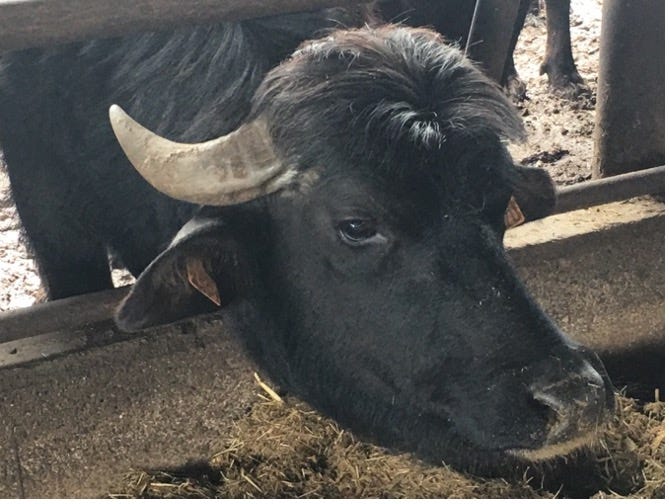
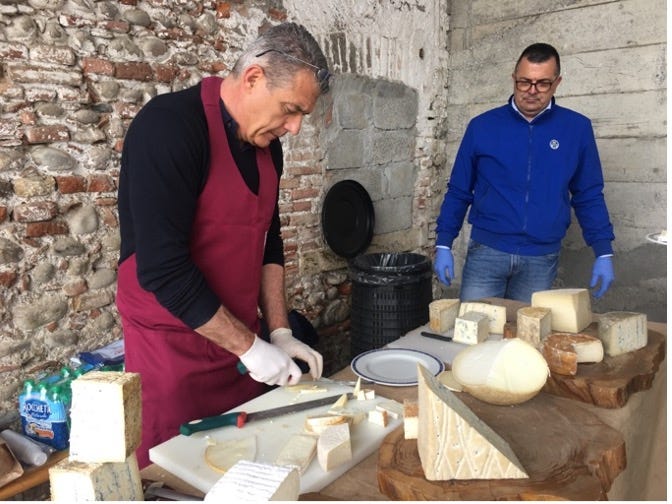
Starting in Lombardy, near Milan, we first visited Quattro Portoni, a producer of more than 15 cheeses made with buffalo milk from their own herd. We arrived in time for cheese making, plus a tasting and a visit with the water buffalos. Then we drove west to Igor Gorgonzola, the largest producer of Gorgonzola PDO. We had an all-Gorgonzola lunch followed by a full tour of the Gorgonzola production. Fascinating!
Emilia Romagna was next. Staying in beautiful Parma, we experienced all the iconic products of the region – Prosciutto di Parma, Aceto Balsamico Tradizionale, and of course, Parmigiano Reggiano, followed by a lunch organized by Consorzio del Formaggio Parmigiano Reggiano. The Consorzio’s website is a place to learn more about Parmigiano Reggiano, and also features a link to organize your own guided visit to a Parmigiano Reggiano dairy.
To complete our cheese adventure, we traveled west to Piedmont, the region whose capital city is Turin. Our cheese visit was at the Fiandino Farm in Villafalleto, south of Turin. The farm has 100 brown cows, and they make all their cheeses with thistle rennet. After seeing the production and the brown cows, we enjoyed a lunch arranged by our friends at the Fiandino Farm. (If this piques your interest, we’ll be visiting Fiandiino again in October 2024 during our Piedmont Culinaria.)
And one more! We drove north from Turin to visit the wonderful Caseificio Rosso, a 4th generation cheese producer in Pollone, under the Alps.

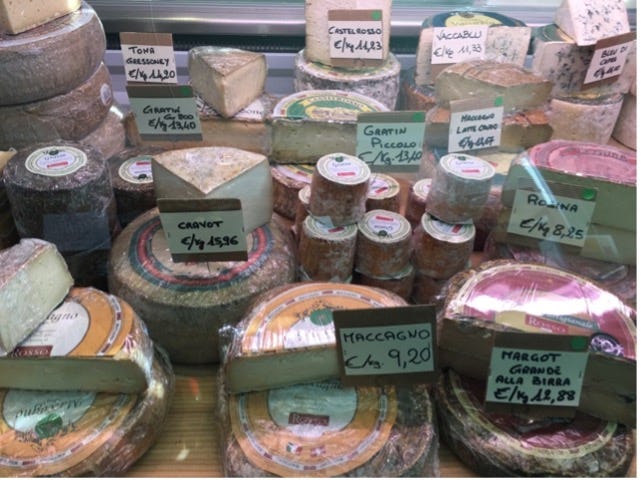
Cyprus. When you think of Cyprus, do you think of halloumi? We do. As the wonderful Marilena Joanindes, a cookbook author and TV chef in Cyprus, writes, “Halloumi can definitely be acclaimed as the national cheese of Cyprus. Its distinct taste and unique texture come as a result of a special making process and change with maturity. Halloumi is traditionally made with goat or sheep milk and is typically folded, as if to cozily embrace the fresh mint. The oldest reference to halloumi was found in a Venetian document, a 16th century manuscript by Leonardo Dona, who later became the 90th Doge of Venice.”
While we were in Cyprus, we were lucky enough to visit a producer of traditional raw milk halloumi cheese and its by-product anari (ricotta-like fresh cheese), as well as yogurt. We saw how halloumi is produced and met the family and their goats and sheep whose milk is responsible for this wonderful cheese.
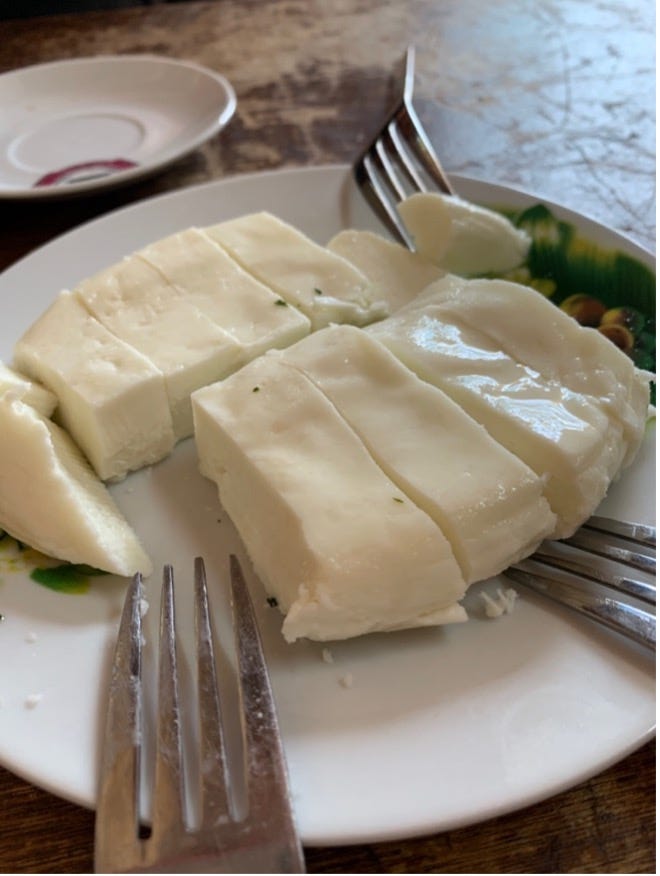

So, as you consider your travel plans, think about cheese for one (or more) of your stops. As Mariano Sanz wrote, cheese is a perfect expression of culture, climate and geographic diversity – a great way to learn and experience a place. If you’re looking for more cheese producers to visit, the Oldways Cheese Coalition web page is a great resource to find producers of artisanal, traditional and raw milk/unpasteurized milk cheeses.







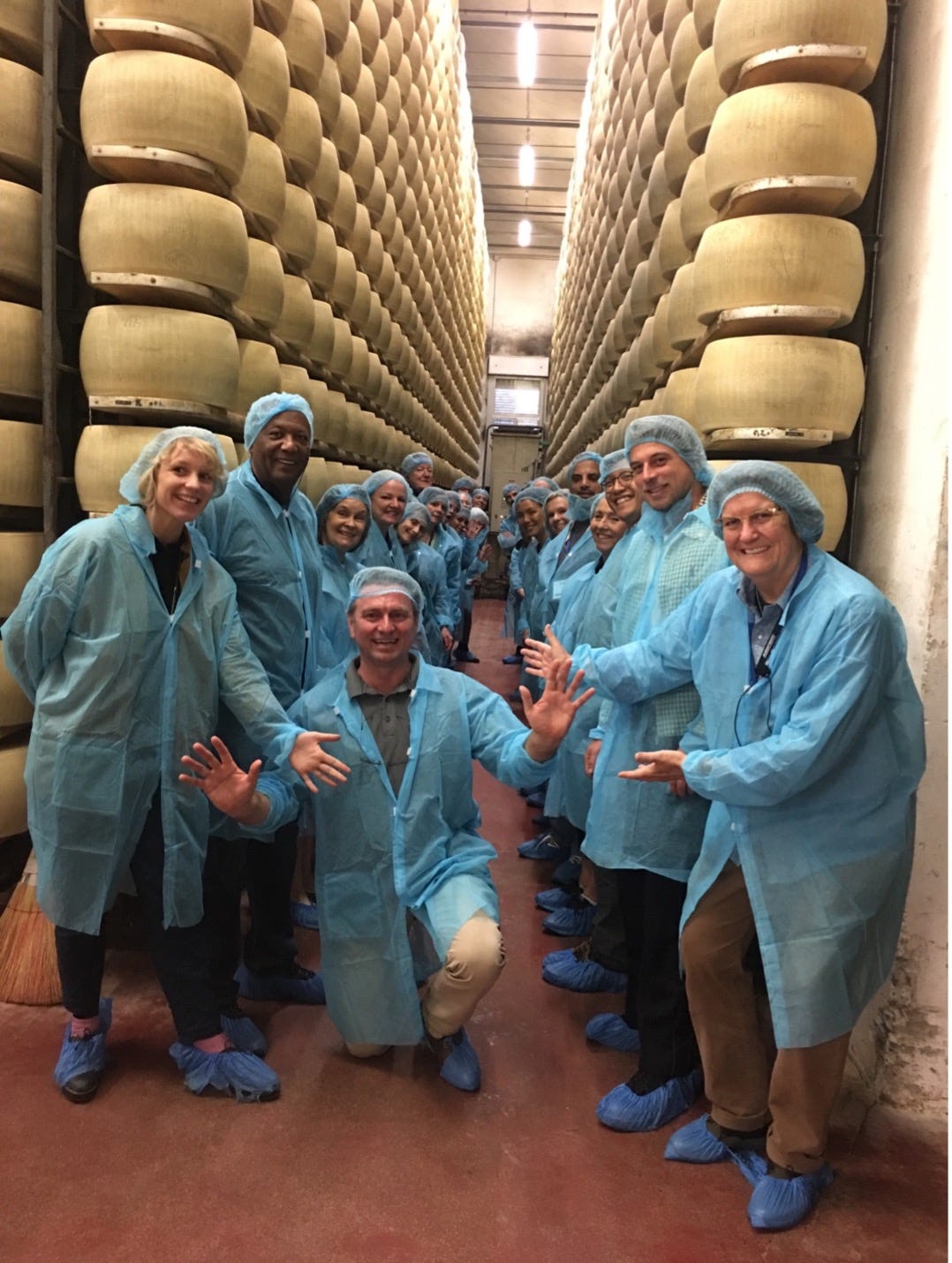
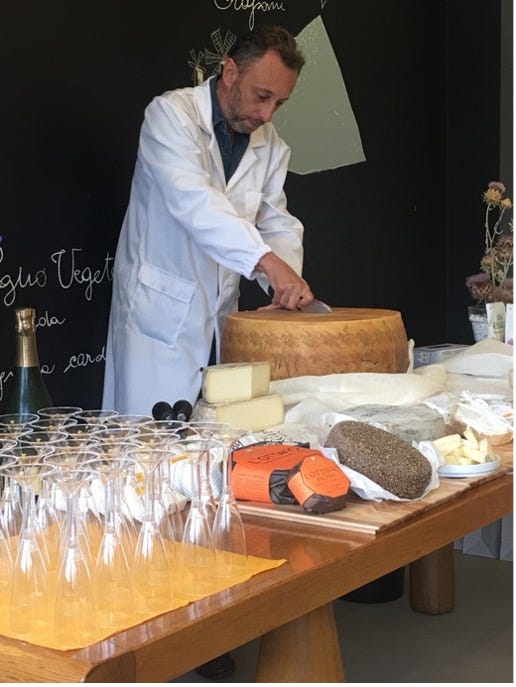
Well, you are definitely speaking my love language. Lucky you to witness the cow homecoming in the Swiss Alps---I love how they are adorned with flowers, cherished and championed for their efforts. Those Kamiku cones look divine! And an all-Gorgonzola lunch, perfect. I was recently in Scotland and was most surprised at how popular halloumi was on every menu! On top of pizza, venison burgs, as a starter with reduced balsamic drizzle! Thanks for this cheesy tour!